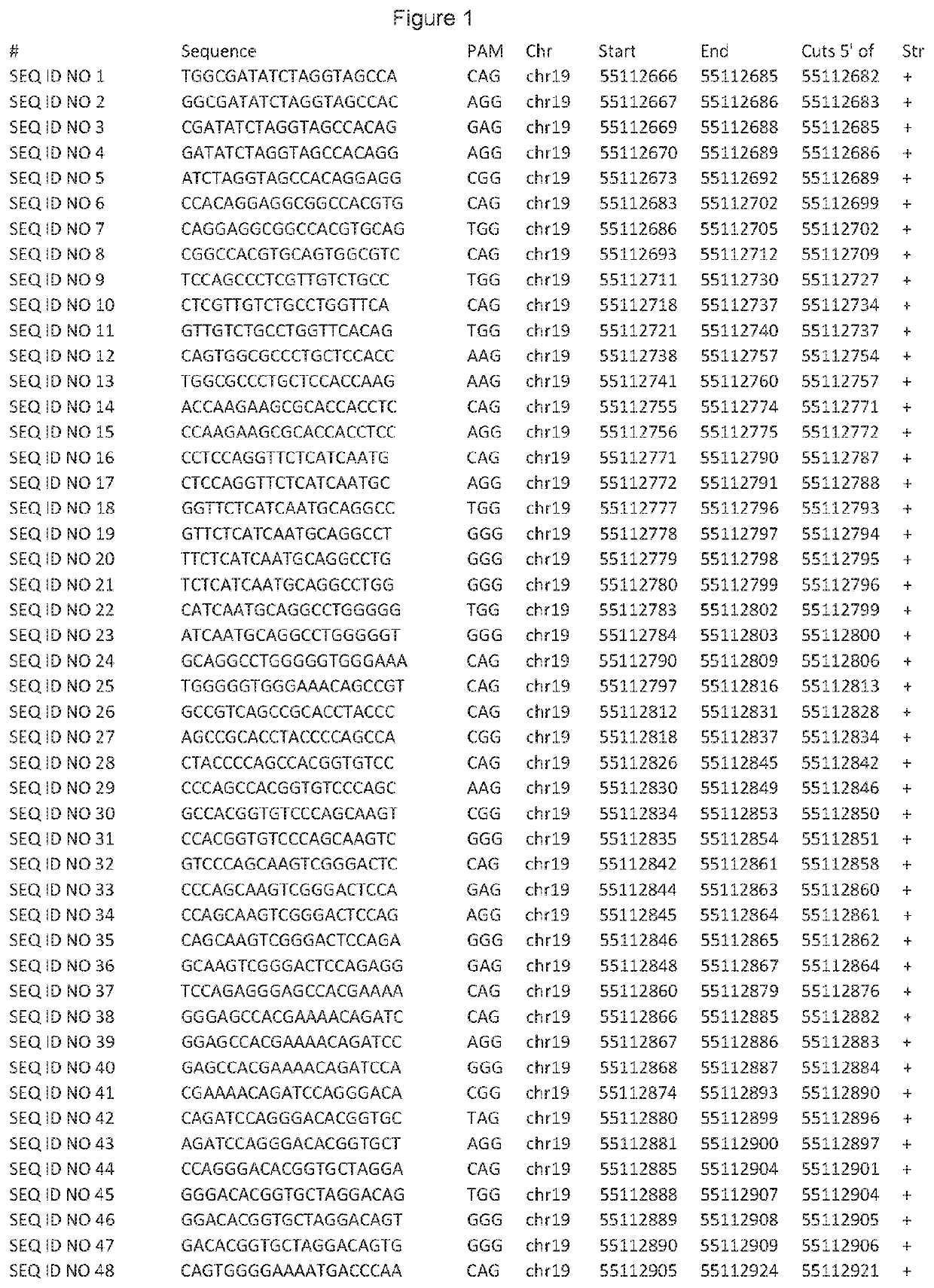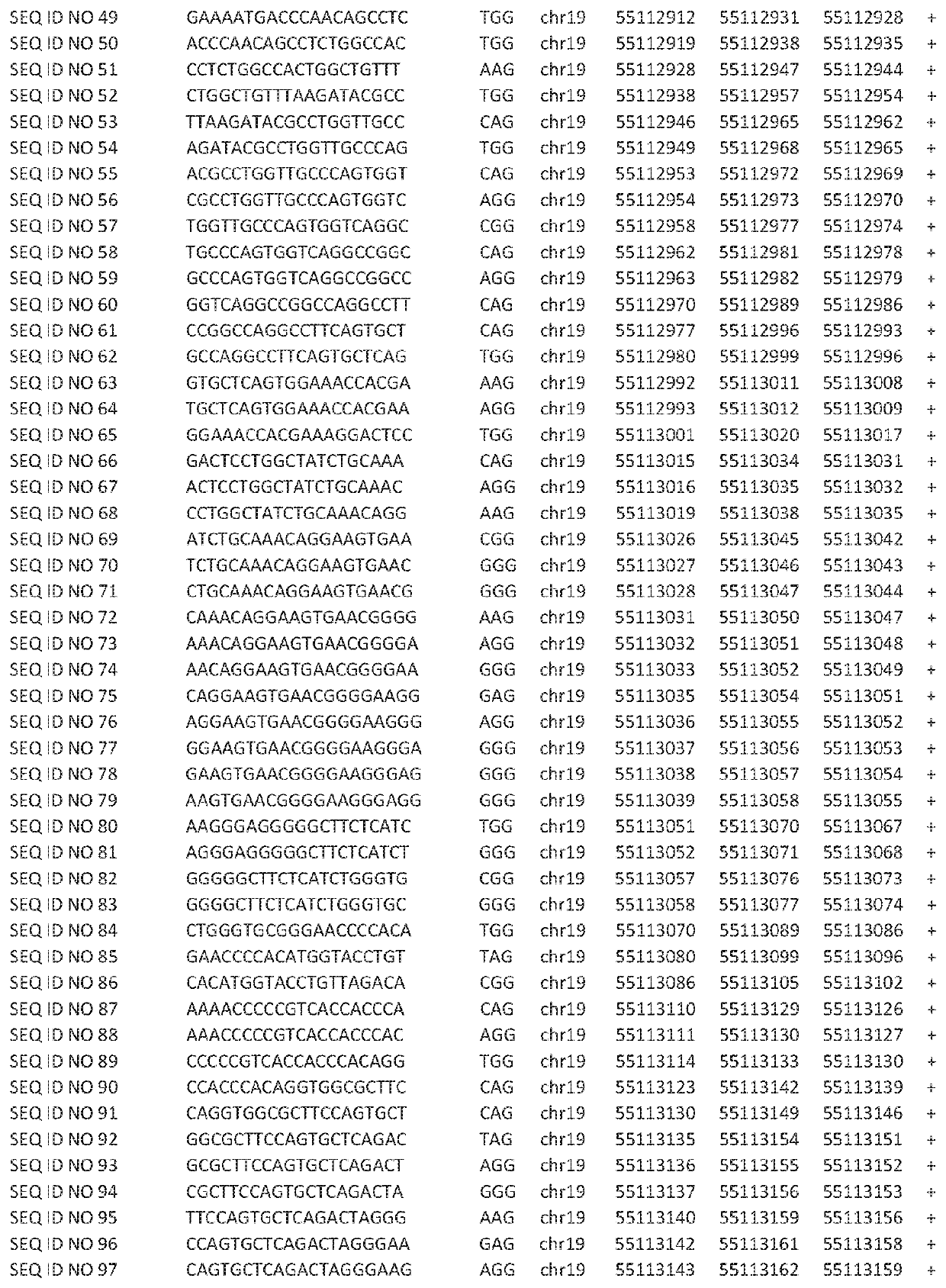Materials and methods for treatment of glycogen storage disease type 1a
- Summary
- Abstract
- Description
- Claims
- Application Information
AI Technical Summary
Benefits of technology
Problems solved by technology
Method used
Image
Examples
example 1
Cas9 Target Sites for the AAVS1 (PPP1R12C) Aerie
[0690]Exons 1-2 of the AAVS1 (PPP1 R12C) gene were scanned for target sites. Each area was scanned for a protospacer adjacent motif (PAM) having the sequence NRG. gRNA 20 bp spacer sequences corresponding to the PAM were identified, as shown in FIG. 1.
example 2
Cas9 Target Sites for the AAVS1 (PPP1R12C) Gene
[0691]Exons 1-2 of the AAVS1 (PPP1 R12C) gene were scanned for target sites. Each area was scanned for a protospacer adjacent motif (PAM) having the sequence NNGRRT. gRNA 20 bp spacer sequences corresponding to the PAM were identified, as shown in FIG. 2.
example 3
Cas9 Target Sites for the AAVS1 (PPP1R12C) Gene
[0692]Exons 1-2 of the AAVS1 (PPP1 R12C) gene were scanned for target sites. Each area was scanned for a protospacer adjacent motif (PAM) having the sequence NNAGAAW. gRNA 20 bp spacer sequences corresponding to the PAM were identified, as shown in FIG. 3.
PUM
| Property | Measurement | Unit |
|---|---|---|
| Fraction | aaaaa | aaaaa |
| Fraction | aaaaa | aaaaa |
| Fraction | aaaaa | aaaaa |
Abstract
Description
Claims
Application Information
 Login to View More
Login to View More - Generate Ideas
- Intellectual Property
- Life Sciences
- Materials
- Tech Scout
- Unparalleled Data Quality
- Higher Quality Content
- 60% Fewer Hallucinations
Browse by: Latest US Patents, China's latest patents, Technical Efficacy Thesaurus, Application Domain, Technology Topic, Popular Technical Reports.
© 2025 PatSnap. All rights reserved.Legal|Privacy policy|Modern Slavery Act Transparency Statement|Sitemap|About US| Contact US: help@patsnap.com



